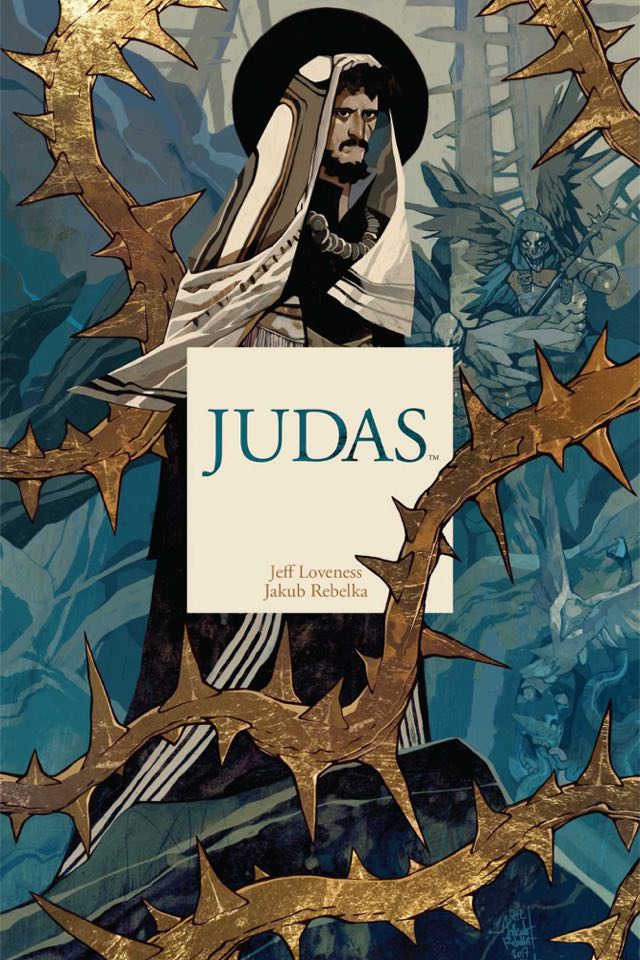Judas
— Nicholas Nichols
But woe to he who betrays the Son of Man. / It would be better for him if he had not been born.
— Matthew 26:24
Did I choose this life? Shit, I don't know / But fuck it, it’s life now, and it’s just how it goes.
— YG, ‘Deeper than Rap’
I was born to a cruel world, I live in a cruel world, and I will probably die leaving a cruel world. It appears, there will always be a growing tide of frustration on the horizon big enough for this to be the last time. When does it get easier? In death? No. That’s just when you can sit with the life you’ve lived and count the seconds more slowly.

In Judas, Jeff Loveness and Jakub Rebelka team up to explore what happened to Judas after the crucifixion: Were they forgiven or did something more complicated occur? Loveness writes how Caravaggio painted; playing in the shadows to reveal what’s hidden in the light. The depths of who Judas was, and the role he played in the crucifixion, is explored in a way—creating sympathy for his character—that I haven’t seen since Milton’s Paradise Lost. In the larger scheme of the story of our lives, if God has preordained everything, he’s even set up the villains—aren’t they all faithful in a way? Loveness explores one of western literature’s most well-known traitors with a kindness that’s refreshing. In four issues, he removes his foot from the moral scale and makes peace with the complex nature of someone so far removed from the present I couldn’t help but forget I was reading a comic.
Truth is not victory.
— Lucifer
All that work was compounded by the lush and vibrant illustrations of Rebelka. He uses tone as a clear indicator between heaven and hell; a useful tool to tether the reader in time as the dialogue continually shifts between the active present and passive memory. As mentioned earlier, if Loveness writes like Caravaggio, then Rebelka draws like Tintoretto. The expansive views he creates of hell made me think primarily of Tintoretto’s Descent into Hell—how could you even make hell look beautiful? Rebelka reminds us it’s also the image that informs the way we imagine the world. He sees a cruel canvas, but his art subtly suggests to us the beauty under the muck and mire of it all.
Judas has inspired me to look at my life with kinder eyes. What active role have I played in the story of my life? How can I choose today and find some peace within? Also, where can I buy more from this duo? The book is for anyone who is trying to learn forgiveness, anyone lost in the backlog of the news, someone with a chip on their shoulder. Life has not been kind to us—that is true—but we can be more compassionate to one another. Isn’t that a miracle we can rejoice in?